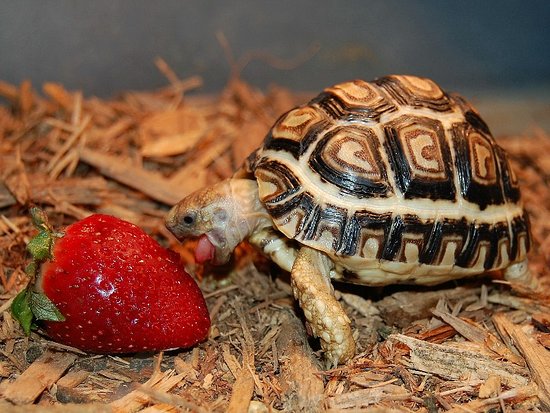How Long Can Turtles Go Without Eating?
Turtles are fascinating creatures with unique biological adaptations that allow them to survive in various environments. One of the most intriguing aspects of their biology is their ability to go for extended periods without food. This article will explore how long turtles can survive without eating, the factors that influence this duration, and the implications for their health and care.
Understanding Turtle Physiology
Turtles are reptiles that belong to the order Testudines. They have a hard shell that protects them from predators and environmental hazards. Unlike mammals, turtles have a slower metabolism, which allows them to conserve energy and survive longer without food.The ability of turtles to go without eating varies by species, age, health, and environmental conditions. Generally, turtles can survive without food for several days to several months, depending on these factors.
Factors Influencing How Long Turtles Can Go Without Eating
- Species: Different species of turtles have varying metabolic rates and dietary needs. For example, aquatic turtles like red-eared sliders may have different food requirements compared to terrestrial tortoises.
- Age: Young turtles typically require more frequent feeding than adults. Hatchlings and juveniles are still growing and developing, which means they need a steady supply of nutrients.
- Health: A healthy turtle can withstand longer periods without food than a sick or stressed turtle. Illness can significantly reduce a turtle’s ability to go without eating.
- Environmental Conditions: Factors such as temperature and humidity can affect a turtle’s metabolism. Turtles are ectothermic, meaning their body temperature is regulated by their environment. In cooler temperatures, their metabolism slows down, allowing them to survive longer without food.
- Hibernation: Some turtle species enter a state of brumation (similar to hibernation) during colder months. During this time, their metabolic rate decreases significantly, and they may not eat for weeks or even months.
How Long Can Different Types of Turtles Go Without Food?
- Aquatic Turtles:
- Aquatic turtles, such as red-eared sliders and painted turtles, can typically go without food for about 1 to 3 weeks. However, they may survive longer in colder water temperatures due to reduced metabolic activity.
- Terrestrial Turtles:
- Terrestrial turtles, like box turtles and tortoises, can go without food for several weeks to months. Adult tortoises, in particular, can survive longer periods without food due to their slower metabolism and ability to store energy in their bodies.
- Hibernating Turtles:
- Turtles that hibernate can go without food for several months. During hibernation, their metabolic rate drops significantly, allowing them to conserve energy until they emerge in warmer weather.
Signs of Hunger and Health Issues in Turtles
While turtles can survive for extended periods without food, it is crucial to monitor their health and behavior. Signs that a turtle may be hungry or unwell include:
- Increased Aggression: A turtle that is hungry may become more aggressive, especially if it is competing for food with other turtles.
- Pacing or Restlessness: If a turtle is pacing or seems restless, it may be a sign that it is hungry or uncomfortable in its environment.
- Weight Loss: Significant weight loss over time can indicate that a turtle is not getting enough food or is experiencing health issues.
- Lethargy: A turtle that is lethargic or inactive may be unwell and should be evaluated by a veterinarian.
Proper Care and Feeding for Turtles
To ensure that turtles remain healthy and do not go long periods without food, proper care and feeding practices should be followed:
- Balanced Diet: Provide a balanced diet that includes a variety of foods, such as leafy greens, vegetables, fruits, and protein sources like insects or commercial turtle pellets.
- Regular Feeding Schedule: Establish a regular feeding schedule based on the turtle’s age and species. Young turtles may need to be fed daily, while adults can be fed every few days.
- Monitor Water Quality: For aquatic turtles, maintaining clean water is essential for their health. Regularly change the water and use a filtration system to keep it clean.
- Environmental Enrichment: Provide a stimulating environment with hiding spots, basking areas, and opportunities for exploration to encourage natural behaviors.
- Veterinary Care: Regular check-ups with a veterinarian experienced in reptile care can help monitor the turtle’s health and address any issues early on.
Summary Table of Turtle Feeding and Care
| Factor | Description |
|---|---|
| Species | Different species have varying dietary needs. |
| Age | Young turtles require more frequent feeding. |
| Health | Healthy turtles can go longer without food. |
| Environmental Conditions | Temperature and humidity affect metabolism. |
| Hibernation | Some turtles can survive months without food during hibernation. |
| Feeding Schedule | Establish a regular feeding schedule based on species and age. |
| Balanced Diet | Provide a variety of foods for optimal nutrition. |
| Monitor Water Quality | Keep aquatic environments clean for health. |
For more information on turtles and their care, you can refer to Wikipedia.
FAQ Section
1. How long can turtles go without eating?
Turtles can go without eating for several days to several months, depending on their species, age, health, and environmental conditions.
2. Do all turtles have the same dietary needs?
No, different species of turtles have varying dietary needs. Aquatic turtles may require more protein, while terrestrial turtles often thrive on a diet rich in greens and vegetables.
3. What are the signs that a turtle is hungry?
Signs of hunger in turtles may include increased aggression, pacing or restlessness, weight loss, and lethargy.
4. Can turtles eat while hibernating?
No, turtles typically do not eat during hibernation. Their metabolism slows down significantly, and they rely on stored energy.
5. How often should I feed my turtle?
Feeding frequency depends on the turtle’s age and species. Young turtles may need daily feeding, while adults can be fed every few days.
Conclusion
Understanding how long turtles can go without eating is essential for their care and well-being. By recognizing the factors that influence their feeding habits and providing a balanced diet, owners can ensure their turtles remain healthy and happy. Regular monitoring and proper care practices will help prevent issues related to hunger and malnutrition, allowing turtles to thrive in their environments.



